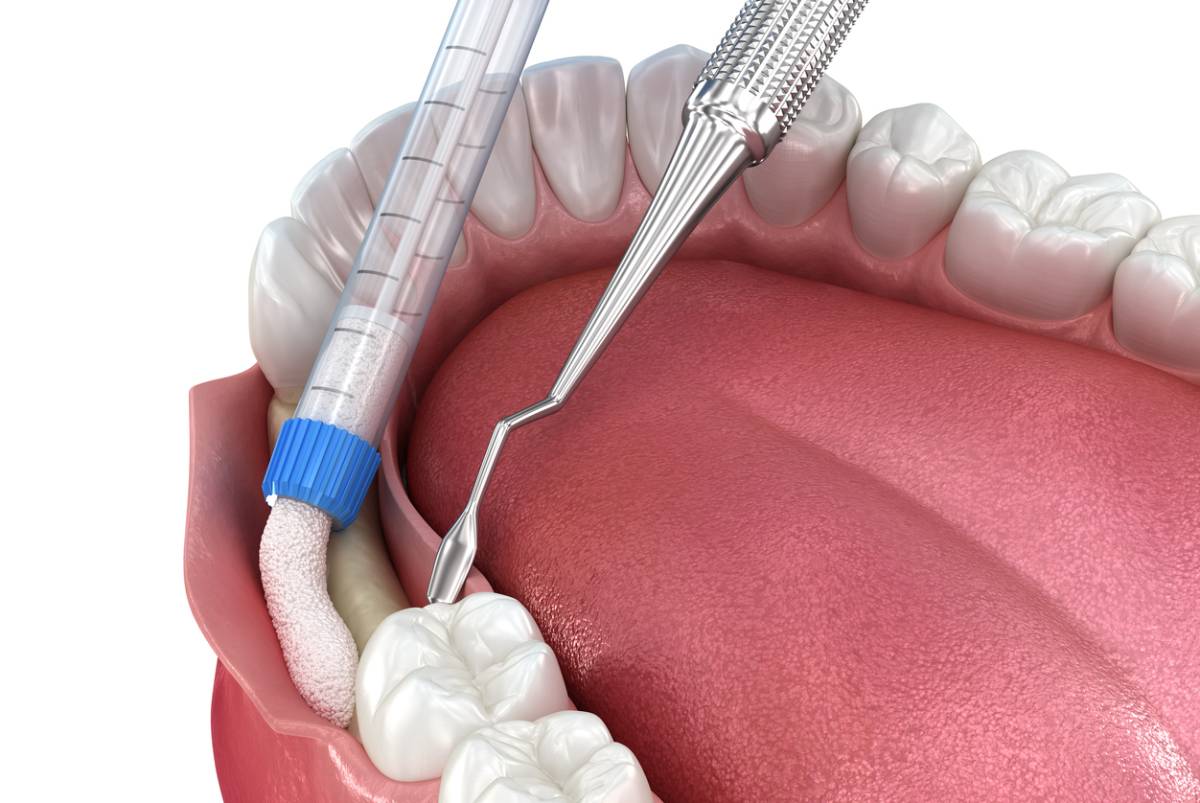Bone grafting is a procedure that is often done as a part of installing dental implants. In some cases, when a patient’s jaw bone is not sufficiently strong, bone grafting for dental implants can be needed. So, is bone grafting painful? In this article, we will answer this question and explain what the procedure looks like.
What Is Bone Grafting?
Bone grafting is a surgical procedure that restores the bone with the help of transplanted bone tissue. This tissue is placed in different areas and fuses with the patient’s own bone over time. The aim of the procedure is to add volume and density to the jawbone if a patient is suffering from bone loss.
The material for dental bone grafting can be synthetic or natural, taken from the body of the patient, purchased from a human tissue bank or an animal tissue bank. When the bone grafting material is placed, it encourages the body to repair and regenerate the bone tissue.
Why Do I Need Bone Grafting?
Bone grafting is a very common procedure and can be recommended by your dentist as a preparation procedure for receiving dental implants and, in some other cases, too. Sometimes, the jaw bone structure is not sufficiently strong to receive and later support dental implants or dentures. The reasons for bone deficiency might include:
- Developmental or genetic issues
- Gum disease that destroyed some of the bone tissue
- Prior facial trauma
- Missing teeth for a long time: when you are missing teeth, the bone starts to “shrink”, losing its density. Patients can lose around 20% of the bone already in the first year of not having natural teeth.
Regardless of the reasons for bone deficiency, bone grafting can be used in various situations:
- If you are planning to have implants but have bone deficiency and need to ensure sufficient support for the implants
- Used if a patient needs to rebuild their jaw before getting dentures
- As a part of periodontal disease treatment
If bone grafting is done in preparation for dental implants, in most cases, the bone has to heal completely after the grafting procedure before the implant can be installed.
Types of Bone Grafts
There are four main types of bone grafting:
- Socket preservation or ridge preservation graft is used to fill the empty space that is left after tooth removal. This type of graft is placed in the empty socket, usually right after the extraction, to prevent deformation of the sides of the socket.
- Ridge augmentation is used to increase the volume of the jawbone before getting dental implants or dentures.
- Periodontal bone graft is used when the bone that supports the teeth is damaged by gum disease. This prevents teeth from getting mobile and loose by placing grafts around them.
- A sinus lift is done in cases when the maxillary sinuses drop down due to upper back teeth loss. The sinuses begin to occupy the space where teeth roots used to be, and it becomes impossible to place dental implants without penetrating the sinus membrane. The procedure of sinus lift puts the sinuses back to their normal position. After that, a graft may be placed underneath the sinus to provide a foundation and support for dental implants.
Is Bone Grafting Painful?
As with most surgical procedures, bone grafting is performed with the use of anesthesia. This means that there is absolutely no pain during the procedure. On top of that, bone grafting is quite a common and routine procedure that is very predictable. There can be some discomfort, swelling, and pain after the procedure once the anesthesia wears off. However, over-the-counter painkillers can help with this type of pain. Also, your dentist might prescribe antibiotics to prevent infection.
Recovery After Bone Grafting
Recovery time after bone grafting may depend on several factors, like the age of a patient and their overall health. In general, 4 to 12 months is needed to completely recover after the procedure. If bone grafting is done as a preparation step before getting dental implants, 2 to 3 months are required for the bone to fuse with the graft.
To make sure the healing process goes smoothly, follow these rules:
- Rest and limit physical activities for several days after the procedure.
- Adhere to a liquid or soft diet and avoid chewing on the side where the procedure was done for several days after bone grafting.
- Complete the course of antibiotics if prescribed by your doctor.
- Change bandages as instructed by your doctor.
- Sleep on your back with your head in the elevated position to ensure the blood flow to the site of the procedure.
Make an Appointment Today
Make an appointment with a friendly family dentist at Glendora Family Dental office if you want to have a consultation on bone grafting or dental implants. Our specialists are looking forward to welcoming you.



